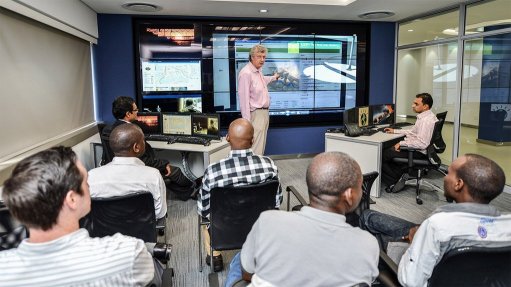
Computing giant IBM, which is deploying integrated computing platforms to help cities manage their resources, infrastructure and services, has opened a client centre at its Sandton offices to offer local city managers a view of the system’s capabilities as it is applied in large cities, including Rio de Janeiro, in Brazil, Nairobi, in Kenya, and Stockholm, in Sweden.
IBM GM Abraham Thomas says the Intelligence Operation Centres (IOCs) are hosted in central command offices, but all city management officials are able to access the information on any device to which they have access.
The IOC, based on IBM’s unified, virtualised computing PureFlex equipment, can draw on information from and integrate existing legacy systems of cities. The operation system is also optimised for cloud deployment.
“IBM works with cities to identify pressure points or points of constraint affecting transport and water systems, as well as maintenance and emergency services and operations. “The aim is to enable cities to use their available resources more efficiently and improve existing systems rapidly,” says IBM South Africa Smarter Planet executive Ahmed Simjee.
The fragmented nature of city management systems often results in resources not being efficiently used, leading to increased costs and possible corruption or wasteful expenditure, while reducing response times and constraining growth.
Using a combination of algorithms and experiences gleaned from large international cities, IBM proposes simple changes to immediately improve the functioning of affected systems. Further improvements are made as real-time data is captured once initial improvements are made, he adds.
The IOC can also be used to analyse traffic flow and congestion, enabling cities to manage unusual traffic events and routine management initiatives, as well as implement simple and effective solutions to improve traffic flow.
“For example, in Nairobi, our analysis of traffic flow along Kenyatta avenue, one of the main thoroughfares through the inner city, showed that installing traffic lights at the three roundabouts would reduce travel time by about 13 minutes along the avenue, as well as reduce congestion on nearby roads. This is a simple initiative that improved traffic flow without requiring new roads,” says Simjee.
Further, IOCs also enable cities to maintain tight control over all budget items and expenses, and manage contract services, maintenance and emergency responses more efficiently.
“For example, the IOC logs all routine work and exceptional job orders. It calculates the most efficient routes that the contract crews must take, reducing turnaround times, fuel consumption, contract costs and the time taken to complete contract work, enabling the city to do more work with the same budget.”
The solution also includes citizen input channels, such as taking pictures of faulty or damaged infrastructure or sending a short text message, which are used to initiate work orders for repairs.
The smart IOC includes algorithms that can identify potential leaks in water management systems based on city data.
“The goal of the IOC is to make cities operate more efficiently immediately, enabling them to use the resources that they save to develop and provide more services or address additional municipal backlogs. This will increase the satisfaction of citizens and can be broadened when cities want to include new systems in their integrated operations,” concludes Thomas.